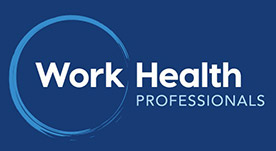Drug and Alcohol Screening
DAS – Perth and WA
Work Health Professionals conduct onsite drug testing in Perth and WA.
We can provide random drug testing, blanket drug testing or regular ongoing drug and alcohol screening (DAS).
In line with your drug and alcohol policy, we conduct urine or saliva (oral fluids) instant drug screening.
It is important that you have a well communicated Drug and Alcohol Policy within your business or organisation before introducing a drug testing program.
Onsite instant DAS
Instant drug and alcohol testing, instant drug and alcohol screens or instant DAS, can be performed onsite at your workplace. Instant drug screening is important for instantly detecting the presence or absence of a drug or it’s metabolites. Instant screening is an important first step and usually a quicker and cheaper option than sending all samples to the laboratory for testing (ie: Lab DAS).
Instant DAS can be either random drug testing, where a nominated % of your employees are selected at random, or blanket drug testing where all employees at a particular site/location/department are tested on the same day.
In most cases, we will only need each employee for less than 10 minutes (assuming they can provide a urine specimen and/or provide enough saliva at the time).
If the instant drug screen results in a “non-negative result”, the specimen should be sent off to a NATA accredited laboratory for analysis, to confirm the possible presence of a drug metabolite within the specimen, as per the Australian Standard. The turnaround time for these confirmation results can be up to 48 hours (longer if over a weekend).
Your Drug and Alcohol Policy should clearly state the course of action for any employee returning a non-negative instant or Lab DAS result. Managers/supervisors need to be aware if this means the employee is to be stood down from work until the confirmatory test results are received.
Onsite collection for Lab DAS
Laboratory urine drug and alcohol screening (Lab DAS) means the specimen is collected onsite and the analysis is done via immunoassay in the laboratory. There is no instant screening onsite. Results are usually available the next day.
Where a non negative result is received and a GC-MS or LC-MS confirmatory test is required (for more legally recognised validity), please call to make that request. Results of the LCMS test normally takes two days from the time of the request.
Work Health Professionals use backup by expert pharmacologists in the laboratory for difficult cases and more detailed test requirements.
Australian standards – workplace drug testing
It is important to ensure your Alcohol and Other Drugs policy meets the current Australian Standards.
Urine drug testing
AS/NZS 4308:2008 Procedures for specimen collection and the detection and quantitation of drugs of abuse in urine
Saliva or oral drug testing
AS 4760:2006 Procedures for specimen collection and the detection and quantitation of drugs of abuse in oral fluid
Workplace Drug and Alcohol Policy
If drugs and/or alcohol have been consumed by employees, a drug and alcohol policy allows the employer to more easily performance manage its employees. Such a policy may also allow the employer to require its employees to undergo specific drug and/or alcohol testing.
Employers should ensure that they apply workplace drug and alcohol policies consistently among all employees. This will assist in defending unfair dismissal claims that may result from terminating staff due to drug and/or alcohol use.
Alcohol
For alcohol there is a well-recognised correlation between blood concentration and impairment of motor skills. Testing for alcohol is best done on site using a breathalyser or similar instrument. These devices are robust, portable and relatively inexpensive. However they require regular calibration and should only be operated by staff who have received appropriate training.
Other drugs of abuse
Chronic abuse of these substances can also pose health problems and lost productivity. However, on most occasions, these drugs are used intermittently and thus the acute effects are more likely to be encountered.
Education
When used in the occupational health and safety context, drug and alcohol testing itself, should never be used in isolation. It is a much more effective tool when combined with education and training for all employees and counselling for those employees who test positive.
See the Guidance note on Alcohol and other Drugs at the Workplace.
